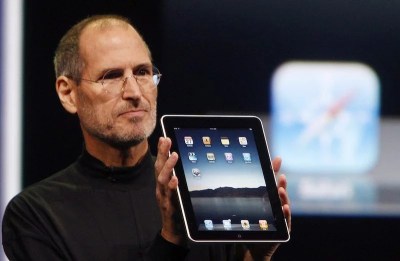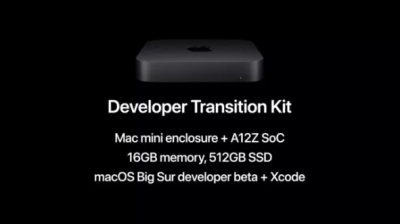At its annual World Wide Developer Conference, Apple dropped many jaws when announcing that their Mac line will be switching away from Intel processors before the year is out. Intel’s x86 architecture is the third to grace Apple’s desktop computer products, succeeding PowerPC and the Motorola 68000 family before it.
In its place will be Apple’s own custom silicon, based on 64-bit ARM architecture. Apple are by no means the first to try and bring ARM chips to bear for general purpose computing, but can they succeed where others have failed?
ARM – A Long Road To The Top

The ARM processor was created by Acorn Computers in the distant past of 1983, with the name originally standing for Acorn RISC Machine. Using Reduced Instruction Set Computing (RISC) techniques, the resulting chips used fewer transistors than classical CISC designs, and used less power as a result. Developed for Acorn’s computer line, later chips also found a home in Apple’s Newton PDA, as far back as 1992. However, as Acorn’s computer business faltered, the technology was largely forgotten from the mainstream.
Despite this, the underlying technology was sound. Spending most of the next two decades languishing in obscurity, the ARM architecture hit its stride when smartphones hit the scene. Devices required plenty of processing power while maintaining great battery life; the ARM was just the tool for the job. Fast forward to today, and ARM chips power 95% of the world’s smartphones.

When Apple’s iPhone revolutionized the way we all thought about phones, it was packing a 32-bit ARM processor sourced from Samsung. As Apple’s continued to release new mobile hardware they were acquiring companies and talent to expand the company’s silicon design capabilities. In 2010, Apple took a major step forward with the A4. The first System-on-Chip designed in-house by Apple, it was an ARM Cortex-A8 manufacturded by Samsung to power the iPad and iPhone 4. This was just the beginning, with Apple continuing to build on this success with each following generation of tablets and smartphones.
After years of being beholden to outside companies for its CPUs, Apple was finally in charge of its own destiny – on mobile platforms, at least. Its desktop and laptop computers had benefited from the switch to Intel’s x86 chips in 2006. However, working with outside partners necessarily has drawbacks, and with over a decade of experience at designing its own chips, Apple no longer considered it worthwhile. The announcement makes it clear that the official transition will take place over a two-year period, with Intel-based machines being supported for some time afterwards. But the writing is now on the wall over at Apple — x86 is dead, long live ARM.
The Switch
Changing processor architecture is a major decision that can affect the entire viability of a platform. In bringing ARM to the desktop, Apple will be looking to succeed where others have failed. However, if past performance is any predictor of future results, they’re well placed to pull off the switch.
Historically, ARM has struggled for a foothold in computer computers — laptops, desktops and the like. A simplistic look might suggest this bodes poorly, but digging deeper, it’s clear that’s not the case. Acorn’s failure in the very beginning was more due to a minnow attempting to launch a new platform in the shadow of IBM’s dominance. In modern times it’s the operating systems and software that have impeded ARM’s progress, but that’s beginning to change.
More recently, Microsoft has launched Windows on lightweight notebooks powered by ARM chips. In doing so, they have tried to create a second Windows ecosystem compiled for ARM instead of x86. These versions of Windows can’t run apps compiled for x86, requiring developers to change their software to suit to take ARM architecture into account. Due to a low install base, very few developers have bothered to build apps for the platform. At the same time, due to the lack of apps, it’s very difficult to increase the install base. The chicken and the egg.
Apple shouldn’t face the same problem, for the simple reason that they’re converting over their entire ecosystem over just two short years. Developers won’t be forced to create two versions of every app for the foreseeable future, hoping that the work done to create ARM versions pays off. Instead, they have the choice to switch over to ARM and go forward with a smile on their faces, or be locked out of Apple’s future desktop offerings. Casual users will barely notice, simply downloading the latest version of whatever software they already use, with Apple’s Rosetta 2 emulator filling in legacy gaps here and there.

The hardest hit by this announcement will be developers of Mac software. Existing software for the x86 OS X platform will need to be modified to run on ARM instead, or else make do with Apple’s emulation tools in the meantime. To ease this process, Apple are providing access to development hardware ahead of time for interested parties, similar to the path they took with the previous switch to x86. Long having held an iron grip on their platform, Apple have spent the last two decades investing heavily in development tools and their own programming language. This has allowed them to lay the groundwork to make the switch as painless as possible. While it’s unlikely the transition will be as simple as clicking a checkbox and hitting the compile button, the necessary tools are already ready to go.
Perhaps the most interesting part of the switch is that the Mac line will now run the same architecture as the iPad and iPhone. This means that apps will be able to run across all devices, opening up new possibilities for developers. Formerly mobile-only apps will run natively on Mac, without requiring recompilation. Obviously developers will make tweaks to interfaces and other such changes to suit the desktop environment. However, the broader problem of creating separate applications for the desktop and mobile realms will largely be a thing of the past in Apple’s world.
Conclusion
While such a major change can seem fraught, by all appearances, Apple couldn’t be better placed to make the switch. With a huge installed base already running Apple silicon, and with ARM computers mere months away, we suspect the transition should be fairly straightforward. Power users and those with complex edge cases will feel some friction, but for the vast majority of Mac users, the journey into the land of ARM will likely be smooth sailing.
No comments:
Post a Comment